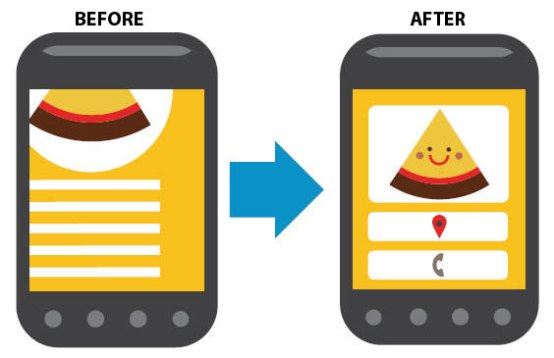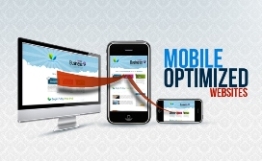Best Ways To Improve Client Interaction
Client interaction is very crucial start before project management and securing leads.

Here are the few ways to improve client interaction
Engage With the Client
Engaging with the client means being personable. That doesn’t mean you have to go to his son’s baseball games and daughter’s wedding but show a genuine interest in what they have to say. Actively listen to the client and make small talk when not talking about the project. Your goal in this part of the game is become the client’s personal freelancer. You want to be his freelancer. You want the client to feel as if you care about them and hopefully you really do.
Empathize With the Client
By putting yourself in your client’s shoes, you’ll be able to identify problems and engage more with the client. Start thinking of them as humans instead of the means by which you feed your Apple addiction. When clients see you truly care they become more receptive, making it easier on you to make suggestions that get discussed instead of looked over.
Ask Questions
Any way you cut it, freelancers don’t ask enough questions. By asking questions, actively listening to the client, and empathizing or empathizing with client you gain buy-in and acceptance. The more intriguing and thought provoking your questions the more you will learn about your client and project. Of course, that will only lead to a great project, a happy client, and repeat business.
Be Humble
Practicing humility will set you apart from other freelancers without this valuable trait. The hardest part about being humble is if you think you are being humble, sadly you are not.
Be an Effective Problem Solver
When a client comes to us they have a problem. It could be that they need a website, search engine optimization, or branding. They have the problem and it becomes our job to solve it, effectively. By design we are a creative lot, so problem solving comes very easy for us. Strive for the simplest solution to the problem, as those have the highest success rate of client integration. As long as the problem is solved with the client’s well-being in mind, then the problem has been solved effectively.
Educate the Client
Does the client need to know how to call a php hook from within the loop in wordpress? No, but they will need to understand what they are paying for. Educate the client on the look of the design, explain some of the science behind end user psychology, or explain the major differences between the content management systems that you are trying to decide on. Like before, if the client can mentally invest into the project and design then less objections rise during the revision process. Don’t go into geek overload and explain color theory, even I can only handle that after a cup or two of coffee.
Million Dollar Treatment
If you have a great client on your hands or even if its a so-so client, it’s still miles beyond a “client from hell”. Let them know you appreciate them. During the project, give them a custom Twitter background that matches their final design, and early payment discount, or some other little freebie. It’s virtually no cost and clients love it! Also, giving them a shout-out on their social network of choice, sending them a thank you card after the project is over, or during the holidays goes a long way with clients. Who doesn’t like to be appreciated?
Have a Good Contract
Believe it or not, having the details of the project laid out in a clear and easy to understand format not only makes it easier on you, but also for the client. Contracts give the client a sense of security and give you an aire of professionalism. It takes some of the guess work out of the project. The client knows what’s expected of them and what’s expected of the designer. Plus, if for one reason or another, the whole project goes belly up then both you and the client have a course of action
Don’t Be Afraid to State Your Opinion
The hardest freelance lesson to learn is learning when to state your opinion. If the client is wrong about something say so. They will appreciate the honesty. Just be ready to point out the error and have a solution ready to go. There’s no sense in pointing out an error only to not have an effective plan of action. Don’t shoot holes in an idea, only to have nothing to patch it up with. Also be ready to admit when you are wrong should the client call you on something too.
Communicate
The best way to ensure client interaction is to communicate effectively. Following some of the suggestions given above will definitely put one on the straight-and-narrow. Be sincere. If you’ve done your job correctly then the little things that you have done (the suggestions of this article) will add up. In the end, its all about value added to the client and the project.
Mobile Friendly vs Mobile Optimized vs Responsive Design
Making a website mobile ready is pretty high on the request list for businesses and organizations developing a new website.
Approximately three quarters of the world’s population now has access to a mobile phone, according to a new study from the World Bank.
75% of World Has Access to Mobile Phones
With mobile devices ranging from handhelds to tablets, understanding how your website will display on the variety of formats is critical. When terms like mobile friendly, mobile optimized, and responsive design come up in development discussions, you’ll know the difference.
Mobile Friendly Website:
Mobile friendly refers to a site that displays accurately between your desktop/laptop computer and a mobile device such as a handheld phone (iPhone, Android, Blackberry) or tablets (iPad, Galaxy, etc.). While it will appear smaller on a phone and may not work perfectly on a touchscreen tablet, a mobile friendly website will be perfectly functional. Many developers view mobile friendly as a “best practice” for all website developments.
Ensuring your website is mobile friendly is critical. As we discussed above, the percentage of mobile users is quickly rising. What are critical features of a mobile friendly website?
- Text-based phone numbers, physical addresses, or email addresses that can trigger a call, directions, or email message from your mobile device
- Slideshows or image rotators that function without Flash support (Adobe Flash is not supported by Apple and some other mobile devices)
- Small image sizes to allow for fast loading over mobile connections—don’t count on even a 3G connection.
Mobile Optimized Website:
A mobile optimized site is a far more advanced website. Mobile optimized means that the site will reformat itself for a list of handheld or tablet devices. Larger navigation buttons, reformatted content, and differently optimized images appear when the user is on an iPhone or other device.
Why reformat? Reformatting allows the website to easily engage a large mobile audience when key buying decisions come up. More and more consumers are turning to their mobile devices right in the store. Having a website developed that allows the user to easily navigate and engage from the small screens of their handheld means reaching a decision faster.
What are some good formatting elements that go into a mobile optimized site?
- Simplified navigation that is “thumb” friendly with large touch-points, especially critical is contact information
- Reduced graphics that don’t interrupt the quest for critical information such as product listings or commoditized content
- Avoid making users type unless absolutely necessary
- Give users the option to view the desktop version of your site
Responsive Design Website:
As website design continues to evolve, a fantastic form of development has come into play. Responsive design is a method of developing a site that is completely flexible regardless of device. Rather than detecting a specific browser type or device type, the website automatically orientates itself based on the screen size of the device. A combination of reformatting and re-optimizing the site as a whole give a practical flexibility beyond imagination.
Responsive design, while more costly to develop, is the wisest development investment if you’re dealing with a consumer or audience-base that is active on mobile devices or need to make purchases on the go. Impulse purchases are obvious, but this is equally critical for commodity content such as blogs or news outlets.
8 Strategies For B2B Marketing Success
Now is a great time to get your team thinking about both short-term goals and long-term activity. Here are eight concepts to focus them on.
1. Play The Volume Game: Do your team members know exactly what they need to do to hit your marketing team goals? High-performing marketing teams understand the volume of marketing activity and precise actions they require to hit their targets. In fact, the best marketing cultures rally around these numbers, which are closely tracked and understood throughout the marketing department.
2. Assess The Quality Situation: Imagine the net impact on marketing programs of a database that is only 75 percent marketable. A short-term fix is to assign someone on your team stewardship of the data. Having that person get a handle on the current state of the database and understand how to fix it quickly will prevent negative impacts of incorrect data on your campaigns. Be forewarned, however, that databases grow and change quickly, so your data quality efforts cannot be a point-in-time fix. High-performing marketing departments have assigned owners of the data, often part of the marketing operations function, and an ongoing plan for assessing and repairing data quality. Make this part of your long-term core strategy, and you’ll see positive results over time.
3. Take An Extra Step In Qualifying Your Leads: Are all of your marketing leads going directly to sales? Fully qualifying your marketing leads into sales-ready opportunities with the help of teleprospecting could dramatically improve the quality and conversion of leads that end up in your sales pipeline. Studies show that marketing leads sent directly to sales may not receive follow-up because sales folks responsible for closing business may not have the cycles to fully qualify and convert marketing leads. Employing a teleprospecting effort, with a dedicated calling team, ensures no marketing lead is left behind. This approach requires agreement with sales leadership on the specific definition of a fully qualified sales-ready lead and can be a great boost to help everyone meet their goals.
4. Get Feedback: In addition to reviewing metrics from the sales automation tool, make sure your team members are constantly engaging with sales to discuss their perception on leads passed and opportunities created.
5. Assess The Targeting Situation: Ensure that you have crossed the “T” in targeting. With a large volume of marketing activity, both inbound and outbound, happening in your department, it can be easy to lose resolution on the target. To ensure you have all of the right target buyers in your database, encourage your team to analyze historical purchase data.
6. Personal Research: The emerging trend of B2B buyers decreasing their engagement with salespeople until they’ve narrowed their options to just a few solutions is not going away.
Now more than ever before, your company’s success requires content that is grounded in deep insight about buyers’ decision to choose you over a competitor, or to do nothing at all. Marketers on your team need to become experts in their target buyers, how they buy, and what is important to them in order to be successful.
7. Messaging Alignment: Marketing creates a lot of stuff. And it is easy to get in the habit of creating unnecessary new stuff to support new demand gen activity. One way to combat that is through planning. Once your team is aligned around the target buyer, conduct an inventory of the content you currently have. Have team members review all content, checking to ensure it maps to the messaging themes of the persona and establishing how the buyer expects to use that content in his buying process. The results can be captured in a simple matrix that will easily the identify gaps that exists and allow you to plan for content creation.
8. Measure, Analyze, And Hold Accountable: With the tools available today, there is no excuse for not being nimble and adapting in real time, yet busy marketers can easily lose sight of tracking the effectiveness of campaigns in real-time and miss the opportunity to adjust to hit goals.
For more details and consultation contact me on contacttim82@gmail.com



